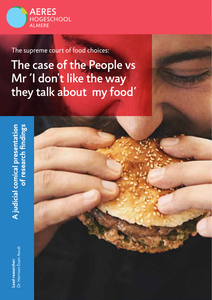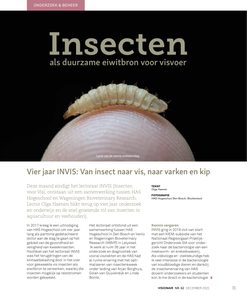Na vele jaren van samenwerking om het Stadshart van Lelystad te verbeteren, laat onderzoek van de rekenkamer Lelystad zien dat er nog steeds uitdagingen zijn. De rekenkamer wilde met het onderzoek inzicht geven in hoe de gemeenteraad effectief invloed kan hebben op het Stadshart en welke concrete stappen de raad kan zetten voor de komende tijd. Het onderzoek wijst uit dat het belangrijk blijft om het Stadshart compacter, levendiger en groener te maken. Ondanks verbeteringen rond het Theaterkwartier en de Promesse, is verdere verbetering nodig. Samenwerking tussen de gemeente en partners uit de private en maatschappelijke sector is essentieel voor het verder versterken van het Stadshart. Hoewel de raad betrokken is, lijkt zijn rol meer gericht te zijn op het plannen en maken van regels, dan op daadwerkelijk sturen en controleren. Er ontbreekt bovendien een planmatige aanpak voor de gewenste transformatie van het Stadshart.
LINK
Amsterdam’s Schiphol capacity is limited to 500,000 air traffic movements per year and currently is reaching the limit. For that reason, Schiphol Group decided to divert the non-hub related traffic to the regional airport in Lelystad. This airport will be upgraded to handle commercial traffic, mainly low cost carriers. We used a divide and conquer approach in SIMIO modules in which we included the main elements in the system namely airspace, runway, taxiways and airport stands for analyzing the future performance and potential operative problems of the airport. An analysis of the different operative areas of the system was performed and we could identify problems due to the emergent dynamics once the different subsystems interacted between them.
DOCUMENT
The aviation industry is a changing industry in which several factors influence the performance of the airport and the network of airports that are interconnected. Business models, technical operations in airspace and in the airfield, societal conditions among others are some of the ones that must be taken into account in order to get a full understanding of the cause-effect relationships that hinder the proper management of the system. In recent times with the evolution of the computer technology and the level of maturity of the algorithms used to simulate and analyse dynamic systems, simulation has gained more importance than before. Simulation approaches emerge as the ones that are able to take into account the stochastic nature of dynamic systems besides all the different factors that impact the systems under study. This is something that traditional analytical approaches could not evaluate and therefore under the constant change of the systems they lack of the proper flexibility to provide timely solutions. However with the popularity that simulation has gained, the different steps and good practices that must be taken into account are commonly forgotten when the simulation model is developed and then the system is analysed; in the particular case of the aviation industry this situation has gained particular importance.The current paper addresses some of the common flaws and pitfalls incurred when simulation is used for analysis of aeronautical systems. Pitfalls’ classification and suggestions for avoiding them are presented. Some flaws are exemplified through cases in which the conclusion from the analysis might differ depending on the angle of the analysis performed with the implications of different economic consequences for the decision makers. The main objective of this paper is that it serves as an eye-opener for a relatively novel researcher or practitioners in the art of simulation. It will serve for avoiding these common flaws when using simulation for addressing aviation problems.
DOCUMENT
Flyer with information about the lectureship INVIS, HAS Hogeschool. Extend and integrate knowledge, experience, and education on healthy and safe insect and fish culture: Investigate risk factors and support the use of healthy and safe insects in aquaculture feed in cooperation with feed processors.
DOCUMENT

De context van dit praktijkvoorbeeld is een door NRO-PPO gesubsidieerd kortlopend onderzoek met de titel 'Vliegwielen voor Begrijpend Lezen'. In dit onderzoek hebben leerkrachten bovenbouw van twee basisscholen in Lelystad hun gebruikelijke lessen 'begrijpend lezen' onder begeleiding en in een professionele leergemeenschap, vervangen door zelf ontworpen lessen Wetenschap & Technologie, volgens de didactiek van Onderzoekend en Ontwerpend Leren, maar nog steeds met de bedoeling de vaardigheden voor begrijpend lezen te ontwikkelen. Want begrijpend lezen wordt ook door domeinkennis en goede gesprekken bevorderd. In dit artikel reflecteren we op de vraag in hoeverre deze aanpak leerkrachten bekwaamt in het ontwerpen van nieuw, geïntegreerd onderwijs, volgens een didactiek die ze niet beheersen, en in een inhoudelijk domein waar ze niet goed in thuis zijn.
DOCUMENT
Numerous developements regarding Orthopaedic (Shoe) Technology takes place in the Netherlands and Belgium. A very close collaboration between FOntys, SVGB, KHKEmepen and NVOS-Orthobanda resulted in educational programs in Orthopaedic (Shoe) Technology.
DOCUMENT

This booklet outlines a 'court case' about shaming someone's food choices. Dit boekwerk behandelt een 'rechtszaak' over het te schande maken van iemands voedselkeuzes.
DOCUMENT

Lector Olga Haenen blikt terug op vier jaar onderzoek en onderwijs en de snel groeiende rol van insecten in aquacultuur en veehouderij.
DOCUMENT

De commerciële kweek van insecten is in opkomst, ook in Nederland. In 2019 waren er 31 Nederlandse bedrijven die insecten kweekten, maar in 2021 waren het er al meer dan 45. “Daarbij hebben we de meer dan 21 deelnemers aan onze beginnerscursus voor ondernemers die willen overstappen op de insectenkweek, nog niet eens meegeteld,” vertelt Olga Haenen. Zij is sinds 2018 als lector betrokken bij het INVIS (Insecten en vis: gezond, duurzaam en veilig) van HAS Hogeschool. De Europese organisatie IPIFF voorspelt dat in 2030 binnen de EU 260.000 ton aan insectenproducten geproduceerd zal worden.
DOCUMENT
